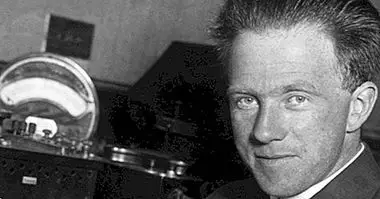Comparative chart: what is it, types and examples
There are many concepts, theories, ideas, stimuli and realities that the human being has been creating and / or studying throughout history, there being a large amount of data and information regarding a practically unlimited variety of topics.
Organizing this information is fundamental if we want to work with them, and it can be useful to generate instruments that show them in a visual and schematic way.
Likewise, when we refer to concepts or points of view linked but different from each other, a good representation of this type may be advisable to try to make an efficient comparison of the elements to be assessed. In this sense, the use of techniques such as the preparation of comparative tables . Let's see what the latter consist of.
- Related article: "The 13 types of text and their characteristics"
Comparative chart: what are we talking about?
It is called a comparative table to a type of basic graphic tool which arises as a result of an attempt to systematize and synthesize in a summarized and easily understandable way a comparison between different categories previously thought out in order to organize the information available with respect to, for example, observed phenomena or parameters of the same variable.
This systematization of the information takes shape, as indicated by its name, of square or rectangle, usually having a table format that is easily interpretable and in which it is easy to visualize the information that is contrasted between the different phenomena or variables observed and analyzed.
It is a basic mechanic of great use for study or even for making quick decisions, which we use quite regularly in our day to day (although its formal use seems to go back only to the nineteenth century, although they probably existed antecedent antecedents to him.
It allows an easy and organized reading of the information, exposing in a clear and concise way the most relevant information and allowing to make a categorization and classification of this and a facilitation of its retention thanks to the use of the visual route.
- Maybe you're interested: "The 8 characteristics of a monograph"
How is it structured?
The structure of a comparative table is highly variable, since each one can do it in the way they want and with different forms and formats. However, as a general rule they all share some basic elements .
In this sense, it consists of a main topic on which the table in question deals, one to several subtopics between which it is going to be divided and which will be compared and then several comparison elements or variables, whose values will be what differ or resemble each other .
For example, we can compare the differences between the main components of the psychoanalytic and psychodynamic school as a theme using the authors Freud and Jung as subtopics and aspects such as the notion of drive, the types of unconscious, the focus on the culturally inherited, the importance given to the libido and the sexual, the interpretation of dreams, the type of psychotherapy and techniques used or the development of personality as variables to be discussed.
- You may be interested: "What is a synoptic table and how is it used?"
Two basic types
Comparative tables can be made in very different ways, in such a way that could be made very diverse classifications Regarding aspects such as the form. However, if we take into account the type of information they use, we can mainly find two major types.
Qualitative comparative table
We consider qualitative all those information that can not be operationalized or that have not been operationalized before generating the comparative table. Thus, it consists mainly of descriptive information in which nuances can not be perceived as the degree to which a certain variable is given . Although easily understandable, it can lead to different interpretations of the information.
Quantitative comparative table
All those comparative tables in which the parameters of the variables have been operationalized and quantified are considered as such, in such a way that information can be worked in such a way that information is provided. on the numerical-mathematical relationships between variables . More technical and usually require more work, but they are also more subjective and less given to misinterpretation.
An example
Next and in order to observe a simple case of comparative table, we will see one with the theme of rhyme types.

Bibliographic references:
- Fink, A. (2005). How to Conduct Surveys. Thousand Oaks: Sage Publications.



















